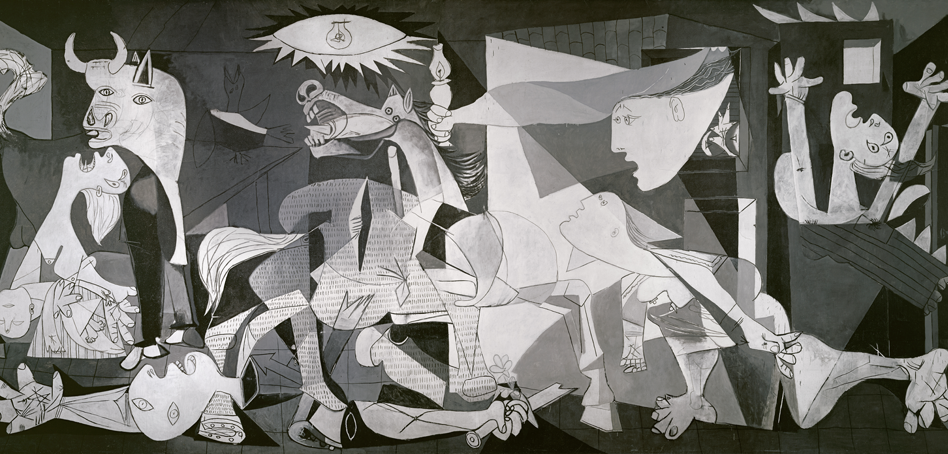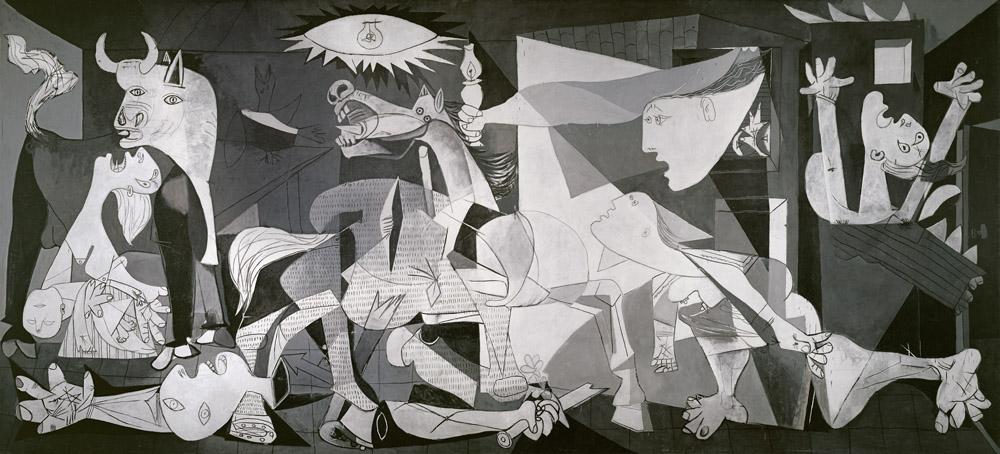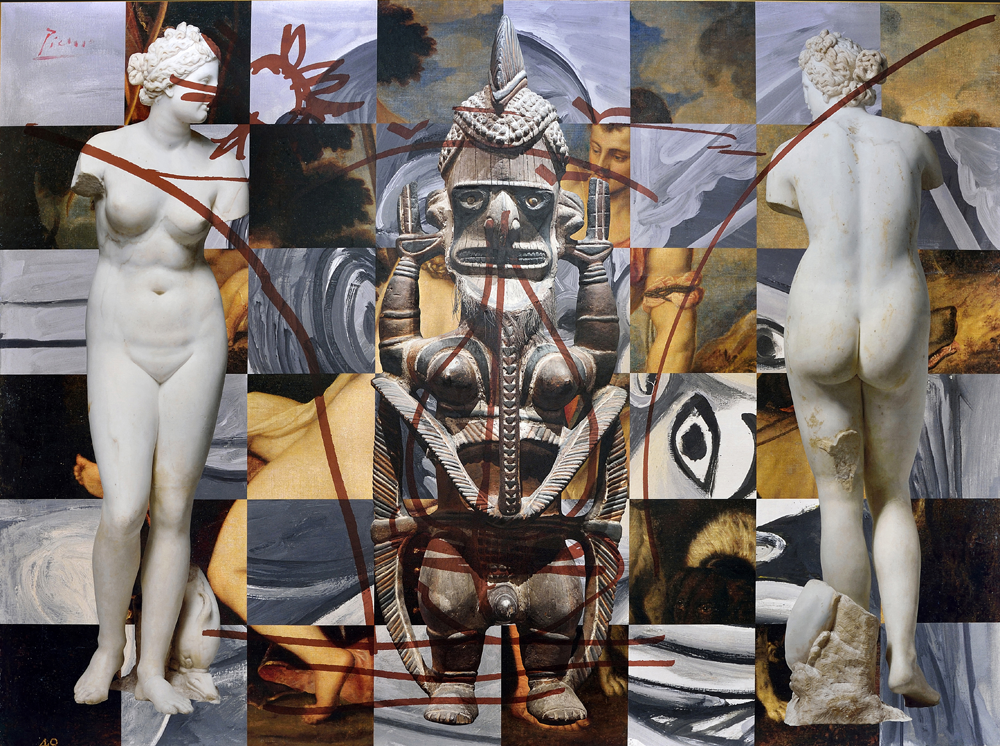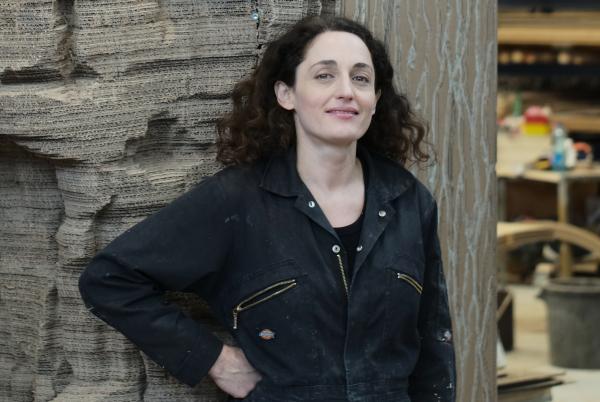Votre panier est vide
Besoin d'inspiration ?
Rendez-vous dans le programme en ligne du GrandPalais
Article -

Guernica’s political meaning is derived from the different contexts it was created in.

It was first exhibited in the Spanish Pavilion at the International Exposition in Paris. At the time, Spain was fighting a civil war, and the mural was seen as a statement against fascism, totalitarianism and armed conflict. During the post-war period in Europe, when Picasso was politically engaged with the Communist movement, the image was reproduced widely in far-left publications around the world. It was held at MoMA from 1939 onwards. However, the Cold War climate in the United States meant that the artwork’s ability to act as a medium for resistance was only tapped in the late 1960s by artists such as Leon Golub and Rudolf Baranik to protest against the Vietnam War. Following the end of General Francisco Franco’s dictatorship, Guernica was returned to Spain in 1981, in accordance with Picasso’s wishes. This marked a new phase in the painting’s history. Since then, there have been regular occasions to witness its symbolic importance, including political reinterpretations by artists and reproductions brandished by protestors, from the United States to the Middle East. For Adel Abdessemed, these layers of meaning take on a philosophical hue: the monumental dimensions of Guernica prove the saying, “man is a wolf for man.”
Votre panier est vide
Besoin d'inspiration ?
Rendez-vous dans le programme en ligne du GrandPalais
See content : Picasso.mania : Demoiselles from elsewhere

Article -
Barcelona’s Carrer d’Avinyó is a street famous for its brothel and prostitutes...
See content : Mickalene Thomas at the Grand Palais: an ode to love and black beauty!

Mickalene Thomas, Afro Goddess Looking Forward, 2015
Article -
It’s happening today! The exhibition All About Love opens its doors. With flamboyant portraits, self-assured bodies and bold expressions of femininity, Mickalene Thomas celebrates the beauty of Black women at the Grand Palais. A joyful and committed...
See content : In the fantastic world of Eva Jospin: 8 questions for the artist

Article -
At the Grand Palais, Eva Jospin's "Grottesco" exhibition offers a timeless journey. Mysterious caves, sculpted nymphaea, petrified forests and "embroidered tableaux" come together to form a world apart. In this interview, the artist reveals her sources of...